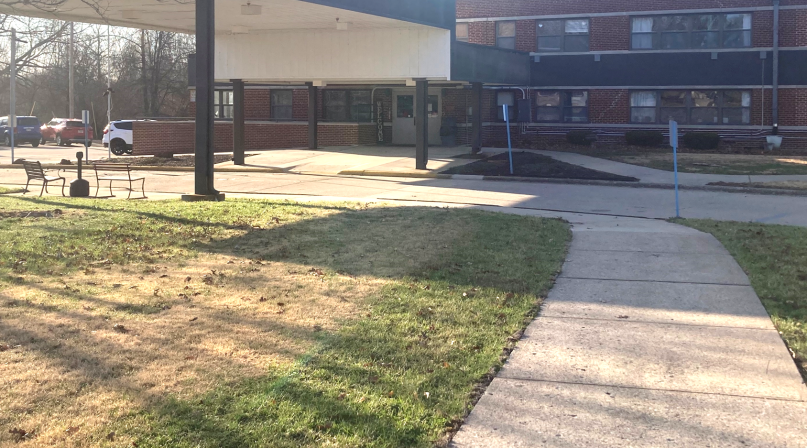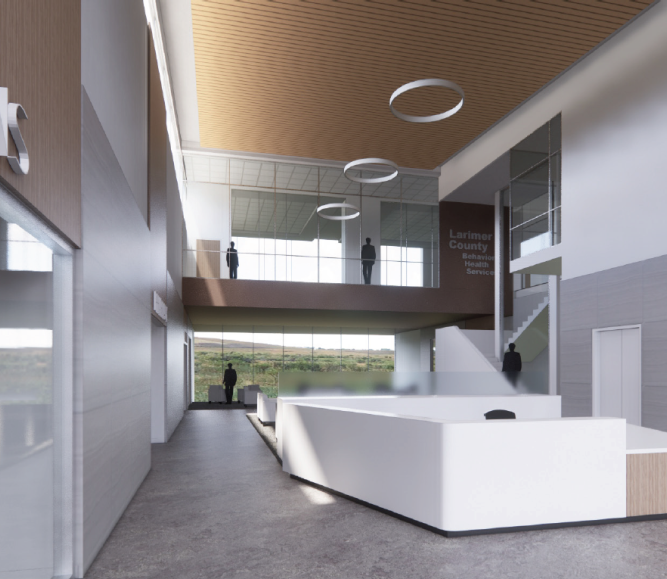Randolph County, Ill. turns unused part of nursing home into state-of-the-art behavioral health center

Key Takeaways
From coal mining to the operation of a coal-fired power plant, the coal industry has historically driven Randolph County, Ill.’s economy.
As the coal industry has declined in southern Illinois, Randolph County recognized the downturn’s effects across the community, especially on community members’ behavioral health. As a member of NACo’s BRECC Coalition, a peer learning network of 20 coal community leaders who deepen their understanding of economic resiliency, Randolph County Commissioner Marc Kiehna has taken a proactive role in the development of the behavioral health center and has advice for other county officials looking to do the same.
More than 100 well-paying jobs were lost in 2019, when one unit of the Randolph County power plant closed.
“We saw our citizens seeking out other forms of employment, either going to St. Louis or working a lower-paying job in a prison or something else in our area,” Kiehna said. “We saw people struggling to stay in our rural area and make the money that they had been used to making before.”
The COVID-19 pandemic exacerbated the impact of the unit closure on the community. Crime rates and illegal substance use spiked during this time, with nearly 50% of arrests occurring in the county being drug related, Kiehna said. Patient needs quickly overwhelmed the county’s three hospitals.
“It starts to hit people when their parents can’t get in for gall bladder surgery because the hospital is overwhelmed by overdoses,” he said.
Public safety officers began arresting repeat offenders, but the nearest behavioral health center was more than an hour away.
“Sometimes, our citizens don’t travel well when they have those types of issues,” Kiehna said, adding that long trips even more perilous.
The growing need to expand the county’s service capacity in the behavioral health sphere caused the community to look within its lines for a solution: A nursing home with empty beds. The 70-year-old facility in Sparta had not recovered from a drop in population during the pandemic, but, as Kiehna said, it had “good bones.”
Half of the facility would remain a nursing home, while the other half would be able to support long-term behavioral health care.
“It became a way to breathe new life back into this facility,” he said. “Instead of closing down a county nursing home, we’re sprucing it up and we’re making it available for more citizens to get the help they need.”
Before construction could start, the community needed to buy in to the idea of a behavioral health center within their county. Community members objected to the idea initially, worried that the center would increase addiction rates and drug trafficking. Some residents questioned whether the county should take a larger role in health services, despite successfully operating the nursing home for more than 50 years.
“Sometimes, people can be naïve, and they don’t realize their next-door neighbor is having drug issues or mental problems or whatever,” so there is no lack of suffering in the community already,” Kiehna said. “The needs are there already, and it’s not uncommon for you to have residents who have dementia issues, who have Alzheimer’s issues and historically, your care centers or your nursing homes have worked with the doctors to deal with these types of residents and help the families work with them.”
To address community concerns, Randolph County held stakeholder meetings with hospital administrators, public safety and emergency response personnel, non-profit organizations and local elected officials to create a consensus around the development of a behavioral health center. The united front and careful planning successfully swayed public opinion in favor of moving the project forward — reflected by a ballot initiative that voters approved.
“Having it on the ballot really prompted people to look into the issue, to think about it practically and invest their time in it,” Kiehna said. “Once an issue gets to referendum, it has some legitimacy, and it moves beyond hearsay and rumor.”
Because the projected cost of the behavioral health center was slightly higher than $10.5 million, Randolph County pursued several different funding opportunities. Federal funding for coal communities provided much needed cost relief for the county, and the American Rescue Plan Act funds provided $3 million alone.
Creating a separate paved entryway to delineate the nursing home and behavioral health center was projected to cost the county $500,000. Kiehna applied for a grant from the Delta Regional Authority that covered this cost. Funding from the City of Sparta, Illinois Department of Commerce and Economic Opportunity and opioid settlement funds provided an additional $2.5 million. These funds combined covered the plumbing, electric and other interior remodeling costs of the nursing home.
One of the largest project costs was replacing the heating and cooling system of the nearly 80-year-old nursing home. The cost of outright replacing a conventional heating and cooling system would cost the county $3.5-$4 million. Inflation Reduction Act funds reduced the cost by nearly half. How? Tax-incentives for projects incorporating alternative energy methods, such as a geothermal heating and cooling system being placed in a behavioral health center.
The health facility’s heating and cooling system will operate fully off the earth’s naturally occurring temperature fluctuations, assisted by a glycine-like material to transfer the energy. More than 200 holes were dug 150 feet deep, pressurized, and connected to one another to form an underground grid. This grid is then connected to the traditional heating and cooling system of the building —incorporating the old infrastructure with the new technology. Kiehna hopes the alternative-energy aspect of the project will bring a sense of pride to the former coal community as it faces changes.
“I would tell others the time is right for them, especially if they are a coal community,” he said. “There are more dollars in grants than we have seen in a long, long time.”
Related News

U.S. Congress begins work on budget reconciliation process: What this means for counties
The House and Senate Budget Committees have marked up Fiscal Year (FY) 2025 budget resolutions to initiate the budget reconciliation process to enact policy priorities without garnering bipartisan support, although the two chambers differ in their approach to drafting the legislation.
Panel: People in crisis need support, not handcuffs
Counties can better serve people experiencing a behavioral health crisis by engaging behavioral health specialists instead of law enforcement, experts told county officials at a recent meeting held at NACo headquarters.

Lawmakers reintroduce the Build Housing with Care Act
On January 30, Senator Ron Wyden and Congresswoman Bonamici reintroduced the Build Housing with Care Act. This legislation would establish a new competitive grant program under HUD intended to boost the supply of co-located child care facilities and affordable housing developments.
County News
County sees hope in behavioral health center

